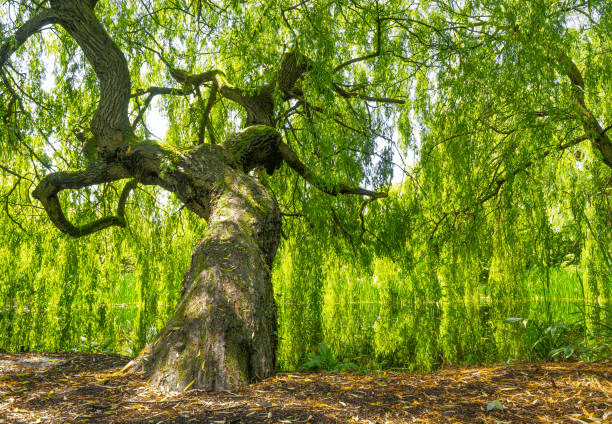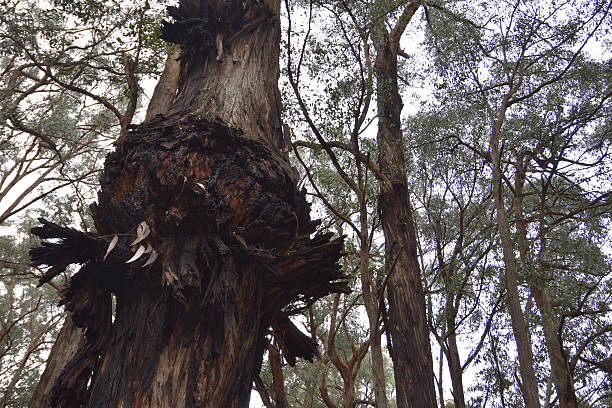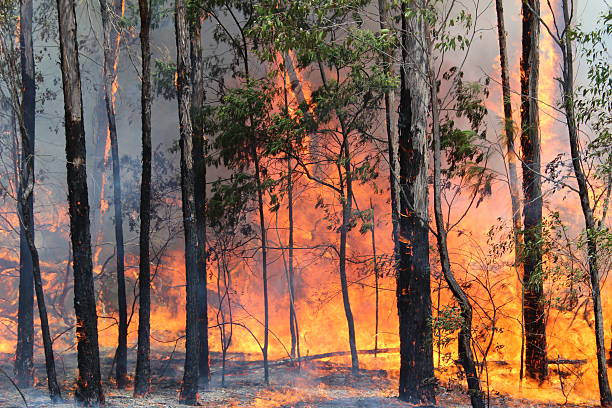The bushfire season poses a huge hazard to Australians, particularly those who live in rural regions. It is quite destructive and can be challenging to put out once it has started.
The country saw the most devastating bushfires from 2019 to 2020, with up to 19 million hectares burned. Forest and bushland made up a substantial amount of the impacted region, damaging habitats and killing around 1.25 billion animals.
When it comes to bushfire danger and tree management in Sydney, the key to success is to act quickly and consistently. As a result, we must be aware of the risks and develop appropriate mitigation techniques before a fire occurs.
High-Risk Trees during Bushfire Season
Several aspects can have an impact on the overall health of trees. High-risk trees that might spread flames are frequently those with health problems and structural damage. Neglected and overgrown trees, on the other hand, can also be hazardous since they give an abundance of fuel for a fire.
Furthermore, unbalanced trees can contribute fuel to the fire, causing it to spread faster and destroy more and more trees. While it is evident that massive old trees provide the greatest hazard during a blaze, the branches can potentially endanger your safety.
If you detect unsafe trees on your property, it is advisable to call a professional arborist or emergency tree services in Sydney, like Tall Timbers, to inspect them and identify the best course of action for risk removal or reduction.
To secure your safety from high-risk trees, our specialists will advise you on whether you require tactical lopping and trimming or full tree removal.
Even if you have arborist supplies in Sydney but lack the necessary skills, it is advisable not to intervene and instead ask for professional tree cutting services in Sydney to correctly remove the tree.
Avoiding a Bushfire from Starting on Your Property
Sydney’s rural districts are often densely forested. If you live in the country, you’re undoubtedly surrounded by trees.
However, trees are the primary cause of bushfires. As a result, knowing how to keep your trees secure and prevent a wildfire from starting on your property is critical.
Cutting Back Overhanging Tree


Big, magnificent trees that hang over your home’s roof look lovely and can provide much-needed shade as well as beauty, but with fire season approaching, this might be a nightmare for your home and family. We often forget, because of the mild weather, that a magnificent tree we enjoy during three-quarters of the year is a possible threat in the summer. Making sure your yard’s trees don’t just overhang your property but also your neighbourhoods, is a vital aspect of danger reduction as the fire season approaches.
Cleaning Gutters
Excess leaves and twigs, often known as tinder or kindling, are fuel for a fire. To offer more effective hazard prevention, ensure any guttering surrounding the house is entirely clean of debris. Even if you have a gutter guard, tree droppings such as pine needles can enter the guard’s perforations. Therefore, pushing water through the gutters to clear them is suggested regularly during the fire season to keep your gutters as clear of undesired material as possible.
Removing Dead Or Diseased Trees:
It’s all too easy to believe that a dead tree poses no harm, but this is not the case. A dead tree is just one large piece of kindling. The same is true for a sick tree. During the fire season, the risk of these trees catching fire and perhaps falling on the property is increased in both cases.


Anything you can do to help prevent a fire from spreading to your property is crucial, and now is the time to get started. With record temperatures expected and the uncontrolled character of Sydney’s fires, it would be prudent to begin reducing fire hazards now.
Contact us right now! Call us at 0414 627 627 and a professionally certified arborist from Tall Timbers Tree Services will discuss with you and offer an obligation-free quotation. We’ll work with you to provide the optimum fire protection for your property.

